The season’s almost over
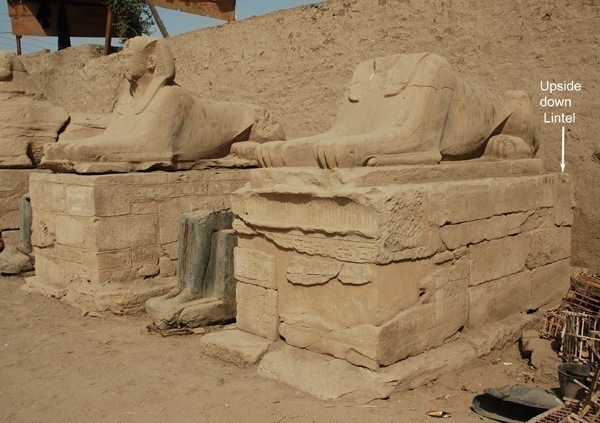
The base of this sphinx east of the precinct entrance is made up mainly of re-used blocks dating to Dynasties 25-26. The one under the sphinx’s paws, for instance, is half of a lintel from a chapel of Montuemhat. Of more interest to us, however, is the rear block, which is an upside down lintel. This re-use is ancient; all modern archaeologists have done is repair damaged blocks.
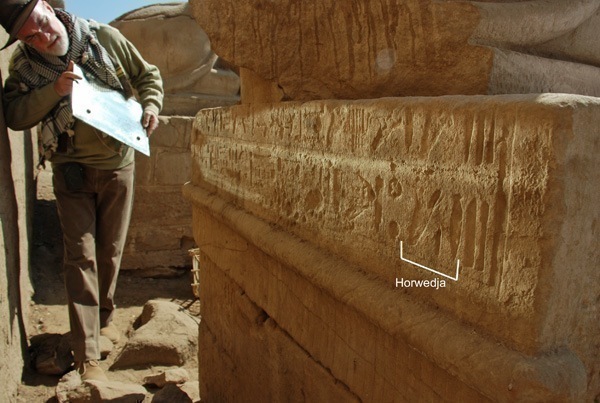
As Richard realized some years ago, the lintel is inscribed for Horwedja, Chief Seer of Re at Heliopolis near ancient Memphis and an important official in early Dynasty 26; with Jaap holding a mirror to reflect sunlight on the inscription you can make out his name at the near end of the block. Horwedja is known from several monuments in Lower Egypt, but none in Upper Egypt – until now. Even better, French Egyptologist Claude Traunecker agreed with Richard that the lintel must originally have come from the magical healing chapel we are restoring this year as it fits perfectly with the dimensions he theorized in his 1983 article on the chapel.
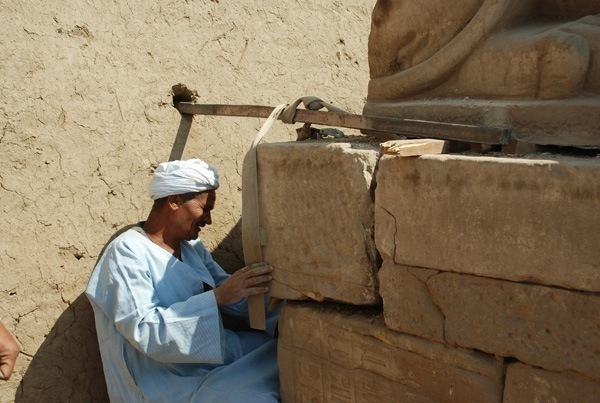
Fortunately the sphinx itself is solid and in good condition. On Sunday morning Khaled and his crew were able to raise its rear a few centimeters to take the weight off the lintel block; you can see one of the wooden wedges in this photo. Two heavy crow bars balanced on the sphinx base and dug into the mud brick of the enclosure wall (which we had reconstructed in the 1980s) support the rigging that holds the rock as it is pried loose. We filled the resulting gap in the base with new stone.
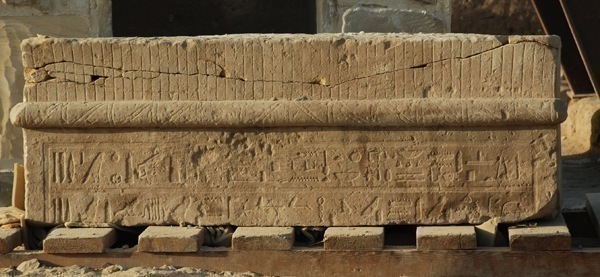
It took a few days to clean and consolidate the lintel, but here it is on Thursday morning, ready to be installed.
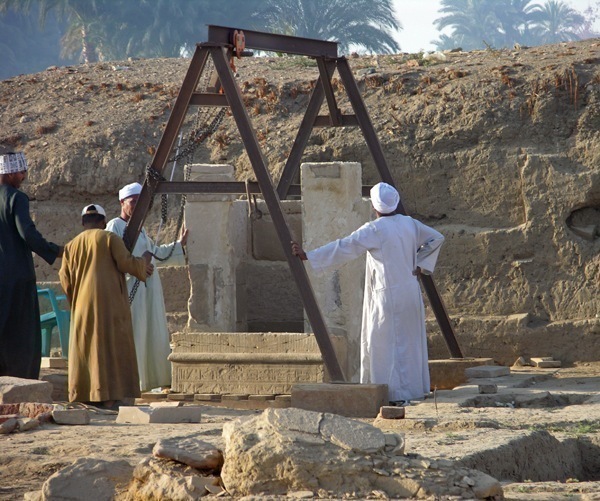
The chapel, Thursday at dawn. The masons had to put baulks of wood under the winch’s support to allow the lintel to be raised to the proper height.
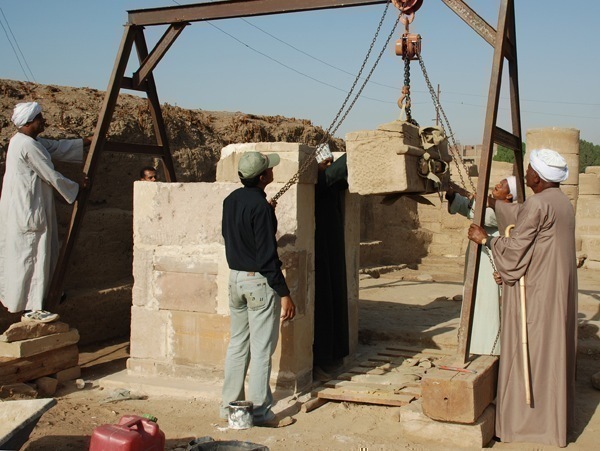
And up it goes, slowly and carefully. Khaled and Farouk supervise, holding the extra lengths of chain to keep them from bumping against the chapel’s blocks.
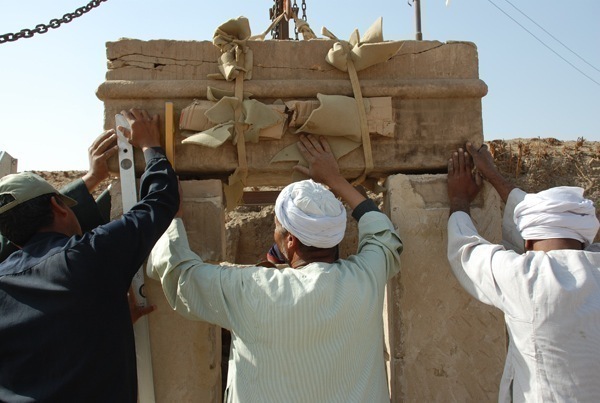
The lintel had to be in precisely the right position before it could be lowered the last few centimeters onto the jambs of the chapel. Manoeuvering a block this size while it’s hanging in the air is not easy.

Khaled and crew in front of the chapel at noon on Thursday, with the lintel in place. They will put the finishing touches on the chapel next week.
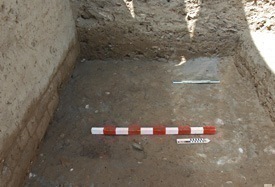

On Saturday morning we reached the bottom of the wall forming the south boundary of the approach to the Taharqa Gate – the same wall that Ayman is excavating further to the east; the lowest rows of brick are clear in this picture. At this level we found a shallow pit lined with a dense, grey clay-like earth that yielded a large number of shells (right). It will take some research to find out what they are (none of us are biologists), but Nile oysters have been found at many sites.
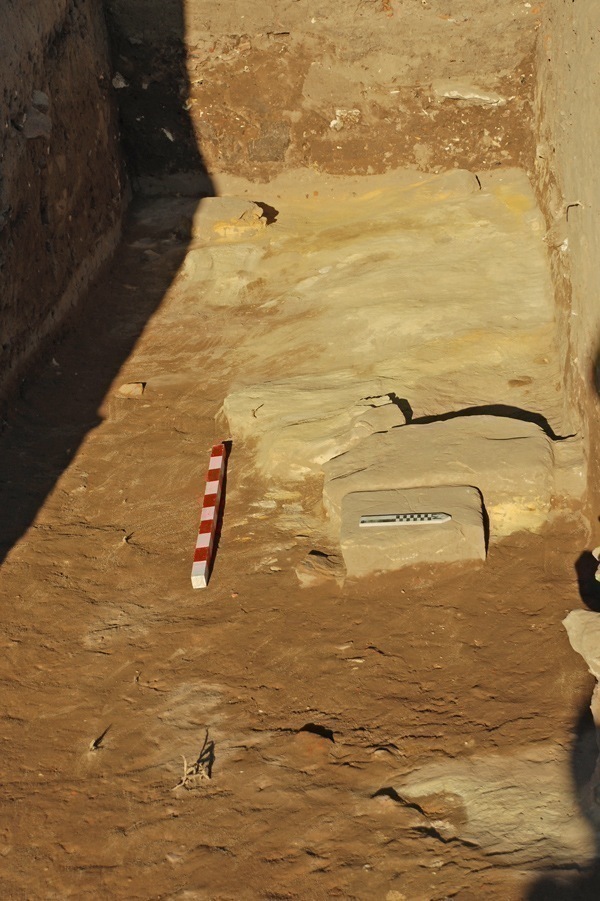
Below the “oyster pit,” under yet more debris, we finally reached paving, seen here looking to the west. As happens so often at the Mut Precinct, the sandstone paving stones are badly deteriorated in this area, although more solid further to the east.
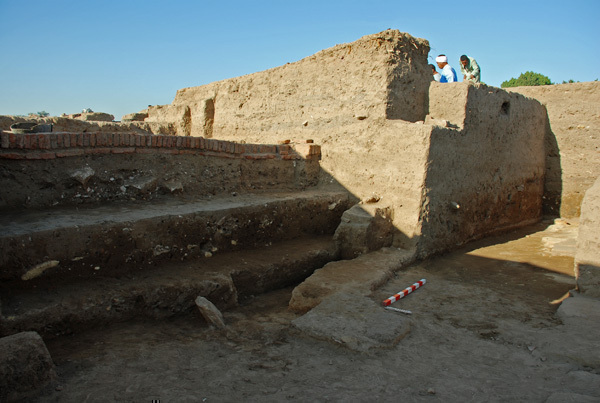
Closer to the Taharqa Gate, where Ayman is working, we have been learning more about the mud brick wall that continues into Abdel Aziz’s square. The last section of the earlier structure (center) was built on the level of the original paving. Over it accumulated a thick layer of earth with stone chips on which the first phase of the boundary wall was built. This phase was only one course thick. More earth, with larger pieces of broken stone, accumulated behind this wall and formed the base for the later phases of the wall, which eventually was about 1.5 m wide. The line of baked brick, which sits on a layer of fairly clean earth on top of the stone-filled strata, disappears into the west baulk.

To find out what happens to this wall, we dug a sounding in the northeast corner of the next square, where Abdullah has been working. As you can see in this photo looking northeast, we found no trace of baked brick. However we do now have the south face of the Taharqa Gate wall, with part of a wall running off it to the south. Where the baked brick should be is a layer of pottery-filled debris. So what happened to the baked brick?
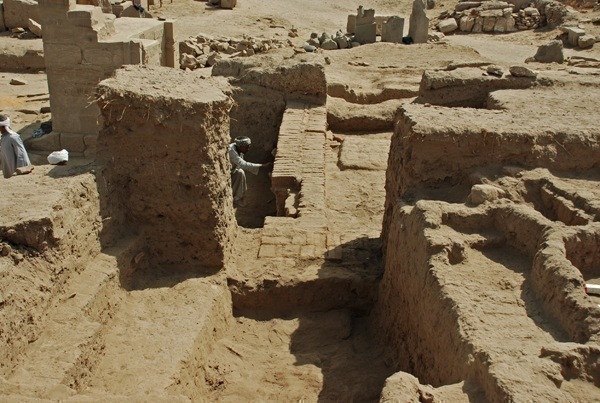
One of the truisms in archaeology is that (a) the most interesting feature will be under the baulk; and (b) you will only come upon it in the last few days of the season, when you are running out of time. That is what has happened here. Since both sides of the baulk on the east side of Abdullah’s square were clearly debris, we had no qualms about cutting a section through it. Sure enough, we found the end of the baked brick line, which turns south and runs directly under the baulk. We will try to follow the brick further south in the few days left to us.
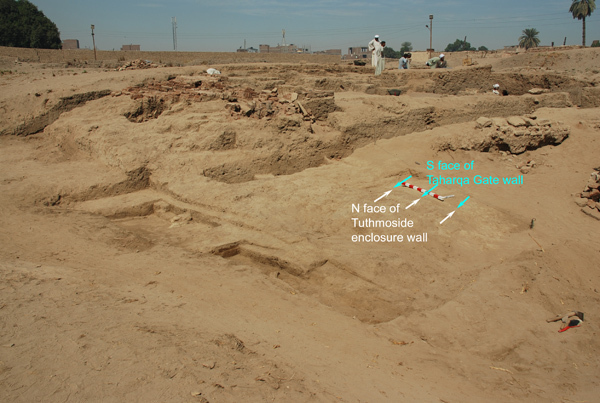
Richard has always theorized that the Tuthmoside enclosure was still functioning as the north limit of the precinct when Taharqa built his new gate, and that the wall running south from that gate abutted the Tuthmoside wall. With careful brushing, Mahmoud was able to confirm this theory. Although the demarcation is a bit difficult to see in this photograph, the distinction between the bricks of the two walls really is clear.
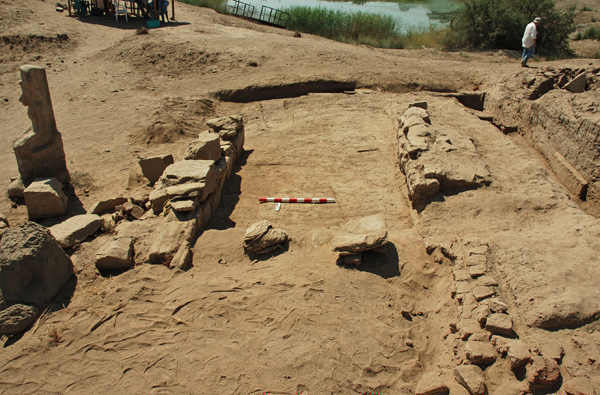
On top of the southern Taharqa Gate wall are two parallel walls, seen here from the north. The western wall (right) is primarily of baked brick and the eastern one mainly re-used blocks. We have now determined that these walls are built directly on the mud brick of the Taharqa Gate wall, as is the cross wall (north of the meter stick). The low height of the remaining Taharqa Gate wall suggests that this construction is considerably later than the building of the wall.
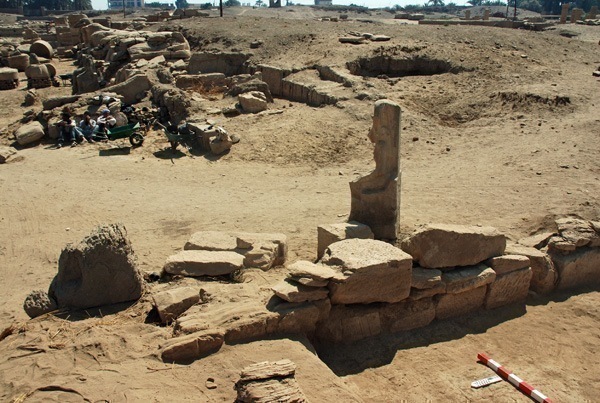
The construction atop the Taharqa Gate wall may be contemporary with the remodeling of the west end of the Mut Temple’s 1st Pylon, against which the workmen sit while I photograph the Taharqa Gate wall. The three westernmost sphinxes in front of the pylon were crammed together to allow a new structure to be built, mainly of re-used blocks, some dating to Ramesses II. Centuries of flooding by the sacred lake has eroded the space between this structure and the construction on top of the Taharqa Gate wall. It is possible, however, that they were built during the Ptolemaic Period to create direct access from Chapel D (just east of the Taharqa Gate) to the lake by cutting through the still-existing Tuthmoside enclosure wall.

Both Anna and Julia have been a big help this past week in sorting the large amount of pottery we have been finding this season. The setting is lovely, but it can get pretty hot on the pottery mats. Thank you both!
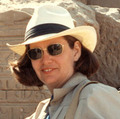
Mary McKercher holds a BA in Ancient Near Eastern Studies (specializing in Egypt) from the University of Toronto and is also a trained archaeologist. In 1979 she joined the Brooklyn Museum’s expedition to the Precinct of the Goddess Mut at South Karnak as photographer and archaeologist, roles she continues to fill. She has contributed to the Mut Expedition’s “Dig Diary” since it began in 2005, and put together the photographs for the 8 Mut Expedition photo sets on the museum’s Flickr site. With her husband, Richard Fazzini, she has also researched and written about the West’s ongoing fascination with ancient Egypt, commonly known as Egyptomania.
